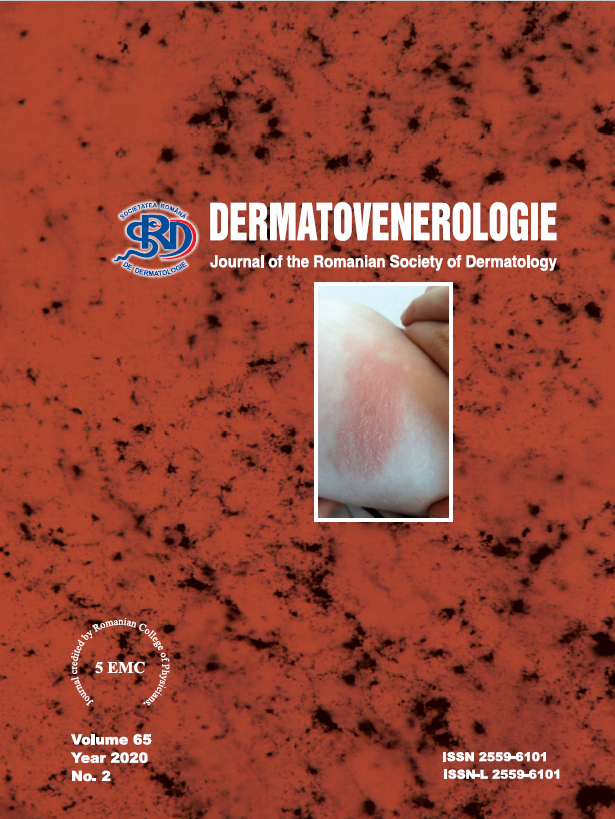Introducere: Boala Behcet este o afectiune multisistemica
inflamatorie de etiologie incomplet elucidata.
Manifestarile clinice cele mai frecvente cuprind ulceratii
dureroase ale mucoasei orale, mucoasei genitale, leziuni
cutanate si leziuni oculare. Prezenta HLA-B51 reprezinta
un factor de risc recunoscut. In etiopatogenia bolii sunt
implicati factori bacterieni, virali si de mediu.
Prezentarea cazului: Raportam cazul unei paciente
in varsta de 24 de ani, din mediul urban, care se adreseaza
clinicii noastre pentru aparitia unor leziuni cutaneomucoase
polimorfe si dureroase. Examenul local
dermatologic a pus în evidenta atat la nivelul mucoasei
genitale, cat si la nivelul mucoasei orale ulceratii multiple,
dureroase, precum si pustule la nivelul fetei anterioare a
toracelui si noduli subcutanati pretibiali. Examenul
oftalmologic a identificat hiperemie conjunctivala, edem
palpebral drept si fotofobie. Examinarile paraclinice au
decelat leucocitoza cu neutrofilie, trombocitoza, limfopenie,
viteza de sedimentare a hematiilor (VSH) crescuta si factor
reumatoid (FR) pozitiv. Examenele bacteriologice si micologice
efectuate din ulceratii au fost negative. Explorarile
serologice au decelat anticorpi IgM anti virus herpetic 1
(Ac IgM anti HSV-1) si IgM anti virus herpetic 2 (AcIg M
anti HSV-2) pozitivi. Pacienta a urmat tratament sistemic
cu antiinflamatoare nesteroidiene (AINS) si tratament
local, crema in combinatie dermatocorticoid-antibiotic. Sub
tratamentul instituit, evolutia generala si locala a fost
favorabila, cu remiterea completa a leziunilor intr-o
saptamana.
Concluzii: Posibila etiologie virala a bolii Behcet
reprezinta un subiect indelung investigat. Evaluarea
completa si multidisciplinara a acestor pacienti este
primordiala in abordarea acestor cazuri.
Cazuri clinice
Herpes Simplex - Factor trigger al bolii Behcet


